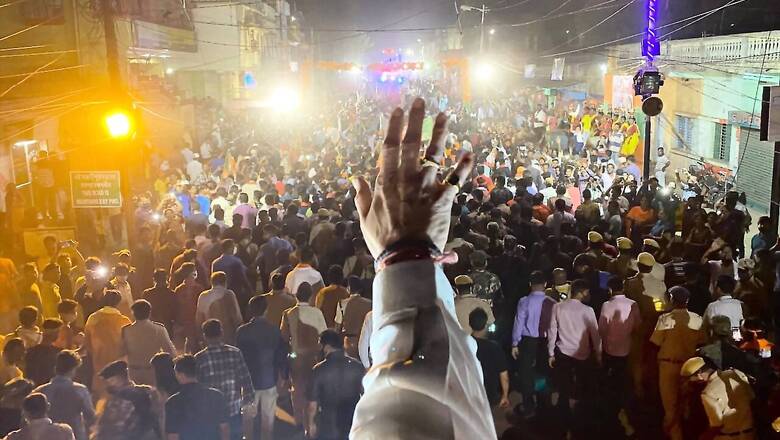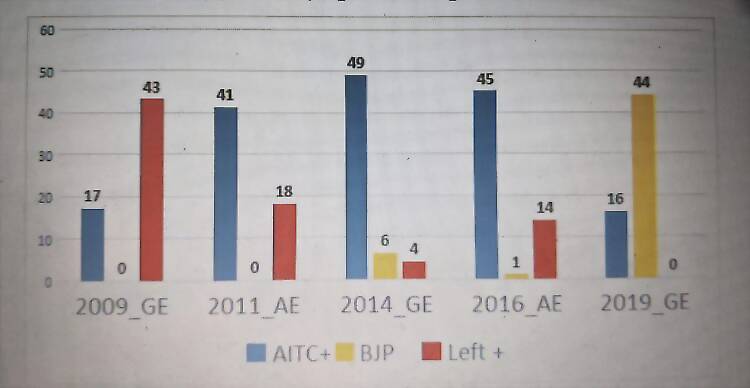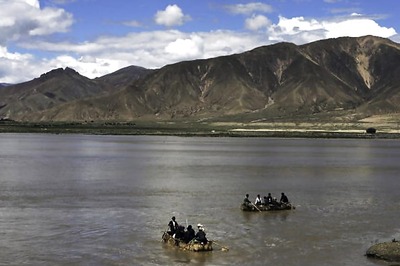
views
The battle for the 17th assembly elections in West Bengal will begin on March 27, when the state’s electorate will cast its vote in the first out of eight phases of polling. What is significant here is that this electoral battle will begin from the Jangalmahal region, which has a significant tribal population and is not only the most backward region of the state but also an area that saw its most violent period (between 2009 and 2011) in recent times. This was due to the second major wave of Naxal violence in the state after the 1967 Naxalbari movement. In this phase of Maoist activities, more than 300 people died just within the span of two years. The epicentre of this second wave was Lalgarh, an administrative block of Jhargram district (carved out of West Medinipur district in 2017).
Jhargram along with Bankura, Birbhum, Paschim Bardhaman, Purulia and West Medinipur districts constitute the Jangalmahal region. This area has 60 assembly constituencies and most of these are adjacent to Jharkhand and some border areas in Odisha.
Jangalmahal: From Left to Right
The Jangalmahal region was one of the bastions of the Left Front in the state till the 2009 Lok Sabha elections. The communist alliance was leading in 43 out of 60 assembly segments in this area. 2009 was the year when the Left Front won fewer Lok Sabha seats than its rivals in the three decades of its electoral dominance in Bengal.
Chart: Seat share of parties in Jangalmahal region

Note: The Congress was in alliance with AITC in the 2009 Lok Sabha and 2011 assembly elections, while the party was in alliance with Left Front in the 2016 assembly elections. Data Source: ECI
The Jangalmahal area is an electoral swing region of the state, which means whoever gets the support of the voters here nets a massive advantage. Since 2009, in each and every assembly and general election, this region provides more than two-thirds of the seats to the leading party (or alliance) in that election (see the chart above).
Till 2009, the Left alliance always had an advantage in this region. But in 2011, this trend was broken by the All India Trinamool Congress (AITC) when the party won 41 out of 60 assembly seats in this region along with alliance partner Congress. In the 2014 parliamentary and 2016 assembly polls, the Trinamool showed complete dominance in this region when it on its own led in 49 seats in 2014 and won 45 in the 2016 elections. However, in 2019 the Trinamool lost its dominance in front of the Bharatiya Janata Party. The BJP swept this region by leading in 44 assembly segments, while the Trinamool’s share reduced to just 16.
This massive support for the BJP in 2019 not only surprised everyone but also threw up a big puzzle: how did a party of Right ideology make such big gains in the land of the Left in such a short time? The data (see chart) clearly indicates that within 10 years (2009 to 2019) the numbers of assembly segments where the BJP and Left Front were leading, were exactly reversed. While in 2009, the Left Front was leading in 43 assembly segments and the BJP not even in one, in 2019 this scenario had changed completely. The Left Front did not lead even in a single assembly segment while the BJP was leading in 44.
Not only the data but many reports suggested that the supporters of the Left Front had voted massively for the BJP in the 2019 parliamentary elections. However, voting by the Left to Right is not an ordinary thing as both are ideologically bonded and it has been rare in the past when that kind of change has occurred. How did ‘Baam’ become ‘Ram’? What is the reason behind this shift from Left to Right? And is this shift temporary or is it going to remain for the long run? These questions pushed this author to visit the Jangalmahal region and try to find some answers directly from the people of this region.
The reasons
The massive gains in votes in 2019 for the BJP in West Bengal were not simply a positive endorsement of Narendra Modi and (or) the party but also had a significant number of negative votes against the incumbent party Trinamool Congress. The ruling party of the state had been facing three kinds of challenges before the 2019 Lok Sabha polls. There was rampant corruption by local-level party workers, factionalism, and the intimidation of Left workers by Trinamool cadres and via the state machinery.
Since 2009, the Left Front had faced a massive challenge from the extreme Left (Maoist groups) in this region at both the government level and the cadre level. On the one hand, the Left was facing a big law-and-order challenge in Jangalmahal, especially in Lalgarh and surrounding areas where Maoist groups were directly confronting the state machinery, and on other hand Left cadres were getting targeted by the Naxal guerrillas. When the regime changed in 2011, after a few months, insurgency incidents went down. However, the issue of intimidation and violence to the Left cadres did not end. Later, Left workers were harassed by local Trinamool cadres. The violence against the Left has been massive in scale as one Centre of Indian Trade Unions (CITU) cadre in his office in Jhargram town told me that more than 200 party workers and local Left leaders have been killed since 2009.
The Left did not come to power in the state in 2016, and it has lost much ground. The Left cadres became demotivated and hopeless. The 2018 panchayat elections became the turning point. At the time, when the intimidation of Left cadres was very intense, the communist parties had to push themselves more to put up their candidates in the polls on every seat but failed to do so. In those times, Left supporters saw hope in the BJP, when they offered legal and monetary help to fight against the Trinamool, as a CITU cadre shared. Since the BJP has been ruling at the Centre, the beleaguered Left cadres saw the possibility of their security in the BJP and decided to support the saffron party in 2019. This shift from Left to Right still remains on the ground. It seems that 2019 was not an exception and it is going to continue for some time. A few percentages might come or go from this shift. However, the trend might not recede much.
(The author is a researcher and election analyst. Views expressed are personal.)
Read all the Latest News, Breaking News and Coronavirus News here




















Comments
0 comment